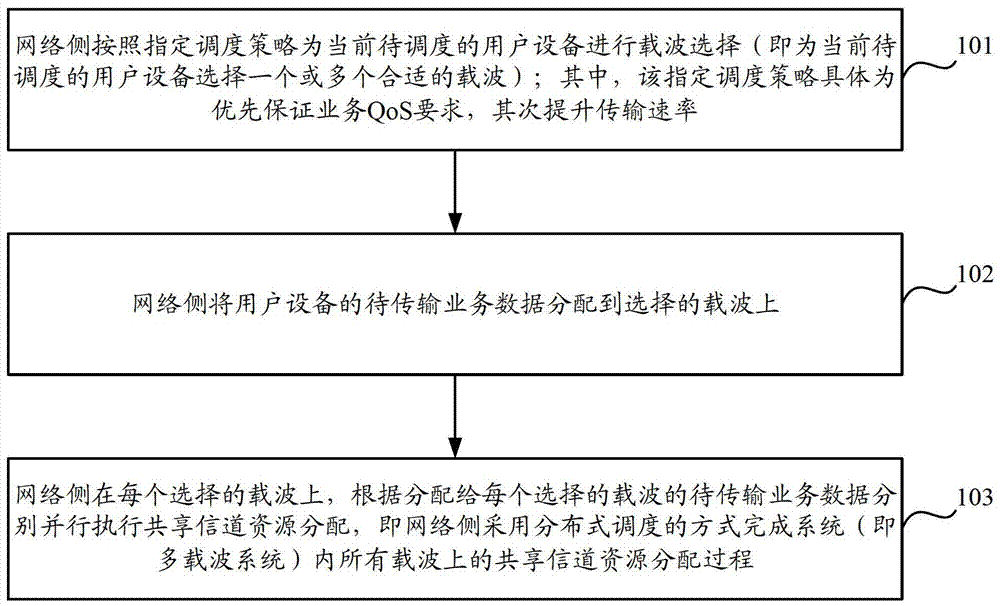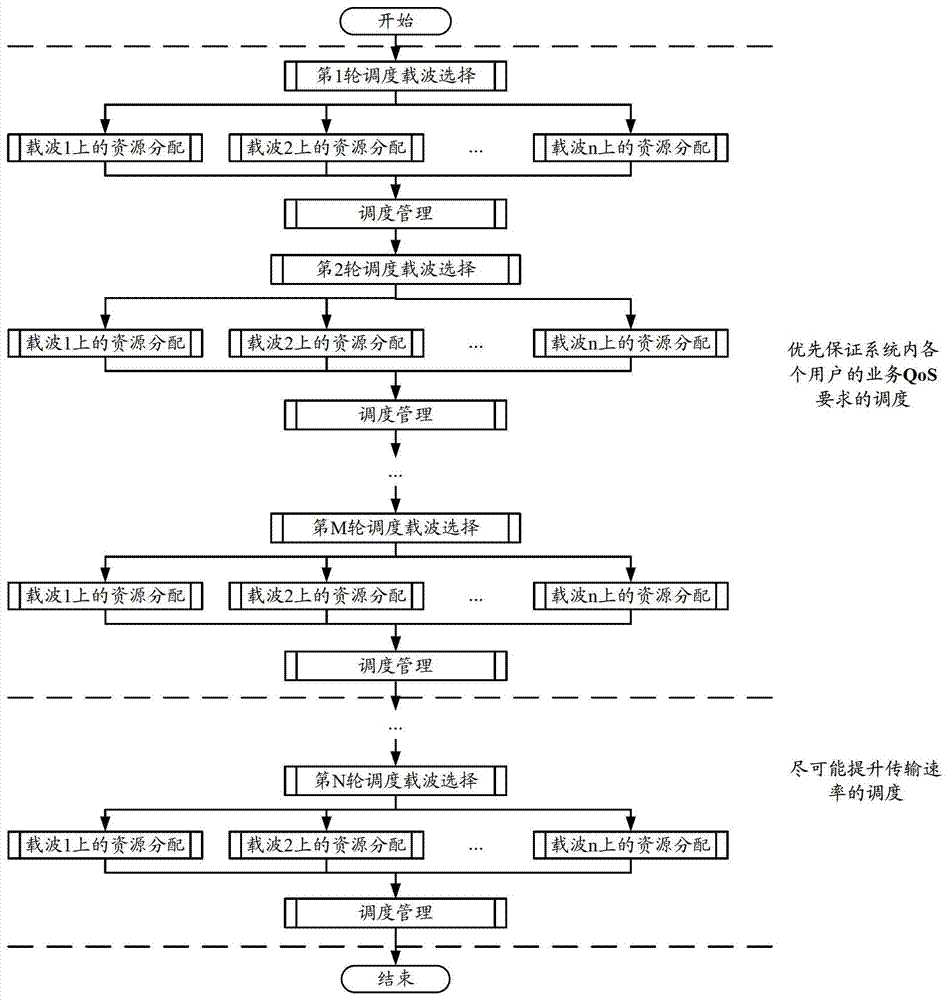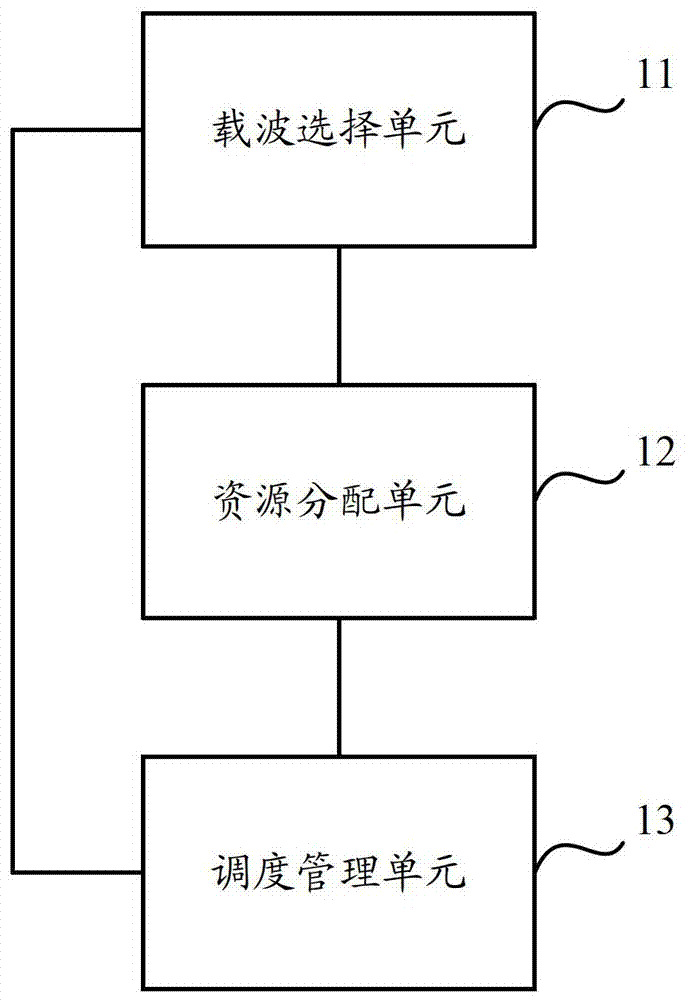A shared channel resource allocation method and device based on a multi-carrier system
A technology of multi-carrier system and shared channel, applied in wireless communication, electrical components, etc., can solve the problem that multi-carrier system is difficult to apply, and achieve the effect of ensuring service QoS performance, flexible scheduling, and improving resource utilization.
- Summary
- Abstract
- Description
- Claims
- Application Information
AI Technical Summary
Problems solved by technology
Method used
Image
Examples
Embodiment 1
[0025] Embodiment 1 of the present invention provides a shared channel resource allocation method based on a multi-carrier system. The method can be used for uplink resource allocation and downlink resource allocation. In the shared channel resource allocation method proposed by the embodiment of the present invention, the scheduling process of each subframe is divided into N rounds according to the idea of firstly ensuring the service QoS requirements of each user equipment in the system, and secondly improving the transmission rate as much as possible, and the first M ( Mfigure 1 As shown, the method includes the following steps:
[0026] Step 101, the network side selects a carrier for the user equipment currently to be scheduled according to the specified scheduling policy (that is, selects one or more suitable carriers for the user equipment currently to be scheduled); wherein, the specified scheduling policy specifically guarantees service QoS first requirements, and s...
Embodiment 2
[0055] The method for allocating shared channel resources based on a multi-carrier system proposed in the embodiment of the present invention will be described in detail below in combination with specific application scenarios. In the application scenario of this embodiment, assuming that a certain multi-carrier system is configured with 3 available carriers, which are respectively marked as CC1, CC2 and CC3, then: the shared channel resource allocation process of each subframe of the multi-carrier system includes the following steps :
[0056] Step 1. Identify the resources pre-occupied by control signaling and semi-persistent scheduling, so as to obtain the remaining available shared channel resources.
[0057] Step 2. If there are no remaining available resources on all carriers in the system, the resource allocation of the current subframe ends; otherwise, start the first round of scheduling. The purpose of setting this round of scheduling is to ensure the service QoS requ...
Embodiment 3
[0062] Based on the same inventive concept as the above method, an embodiment of the present invention also provides a shared channel resource allocation device based on a multi-carrier system, such as image 3 As shown, the equipment includes:
[0063] The carrier selection unit 11 is configured to perform carrier selection for the user equipment currently to be scheduled according to a specified scheduling strategy; wherein, the specified scheduling strategy is to give priority to ensuring the quality of service QoS requirements of the business, and secondly to increase the transmission rate;
[0064] A resource allocation unit 12, configured to allocate the service data to be transmitted of the user equipment to a selected carrier;
[0065] The scheduling management unit 13 is configured to perform shared channel resource allocation in parallel on each selected carrier according to the service data to be transmitted allocated to each selected carrier.
[0066] The carrier ...
PUM
 Login to View More
Login to View More Abstract
Description
Claims
Application Information
 Login to View More
Login to View More - R&D
- Intellectual Property
- Life Sciences
- Materials
- Tech Scout
- Unparalleled Data Quality
- Higher Quality Content
- 60% Fewer Hallucinations
Browse by: Latest US Patents, China's latest patents, Technical Efficacy Thesaurus, Application Domain, Technology Topic, Popular Technical Reports.
© 2025 PatSnap. All rights reserved.Legal|Privacy policy|Modern Slavery Act Transparency Statement|Sitemap|About US| Contact US: help@patsnap.com



